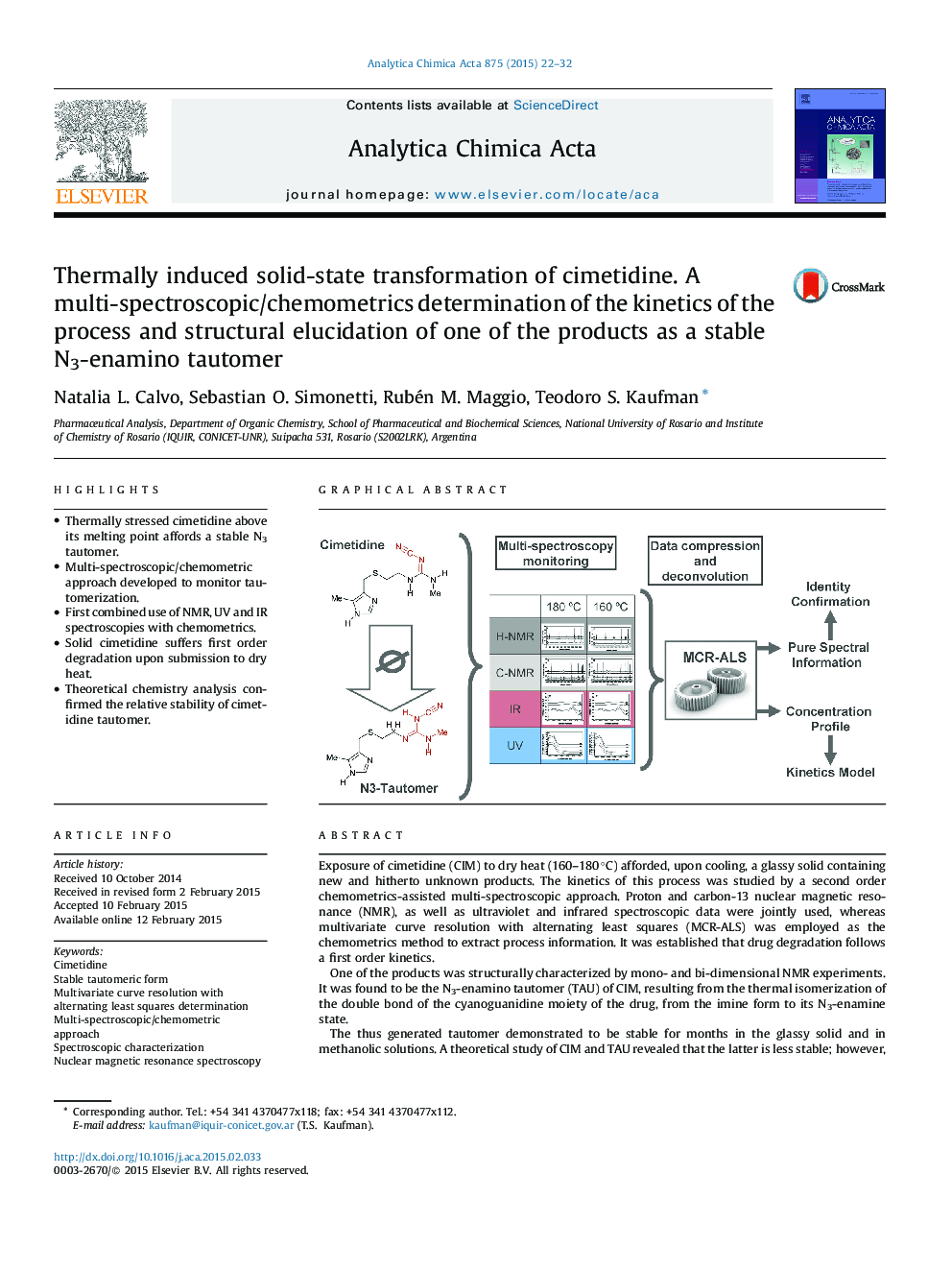| Article ID | Journal | Published Year | Pages | File Type |
|---|---|---|---|---|
| 1163528 | Analytica Chimica Acta | 2015 | 11 Pages |
•Thermally stressed cimetidine above its melting point affords a stable N3 tautomer.•Multi-spectroscopic/chemometric approach developed to monitor tautomerization.•First combined use of NMR, UV and IR spectroscopies with chemometrics.•Solid cimetidine suffers first order degradation upon submission to dry heat.•Theoretical chemistry analysis confirmed the relative stability of cimetidine tautomer.
Exposure of cimetidine (CIM) to dry heat (160–180 °C) afforded, upon cooling, a glassy solid containing new and hitherto unknown products. The kinetics of this process was studied by a second order chemometrics-assisted multi-spectroscopic approach. Proton and carbon-13 nuclear magnetic resonance (NMR), as well as ultraviolet and infrared spectroscopic data were jointly used, whereas multivariate curve resolution with alternating least squares (MCR-ALS) was employed as the chemometrics method to extract process information. It was established that drug degradation follows a first order kinetics.One of the products was structurally characterized by mono- and bi-dimensional NMR experiments. It was found to be the N3-enamino tautomer (TAU) of CIM, resulting from the thermal isomerization of the double bond of the cyanoguanidine moiety of the drug, from the imine form to its N3-enamine state.The thus generated tautomer demonstrated to be stable for months in the glassy solid and in methanolic solutions. A theoretical study of CIM and TAU revealed that the latter is less stable; however, the energy barrier for tautomer interconversion is high enough, precluding the process to proceed rapidly at room temperature.
Graphical abstractFigure optionsDownload full-size imageDownload as PowerPoint slide
